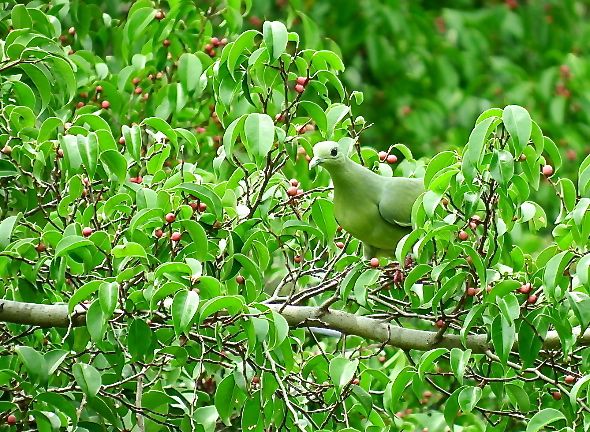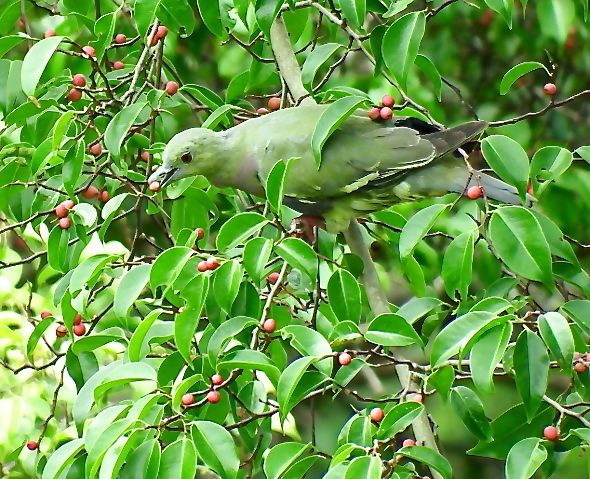“On the 9th November 2014, I was drawn towards the majestic crown of a mature fig tree (Ficus benjamina), which was punctuated with abundant red fruits. These enticing red dots had also captured the attention of Pink-necked Green-pigeons (Treron vernans).
“The demographics of this flock of pigeons included: females (above), which blended with the foliage remarkably;
“males (above, below), which paraded their pretty pink necks proudly;
“as well as juveniles (below), which sometimes struggled at selecting the ripest fruits.
“Video clips of the pigeons indulging in their fig feast may be previewed here:
“These rich pickings were free for all, while stocks last, and by the next day, most of the fruit had already vanished.”
Dr. Leong Tzi Ming
Singapore
16th June 2015












